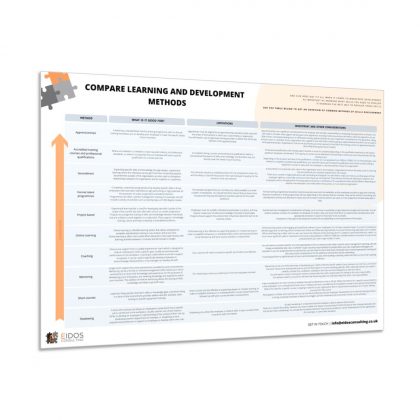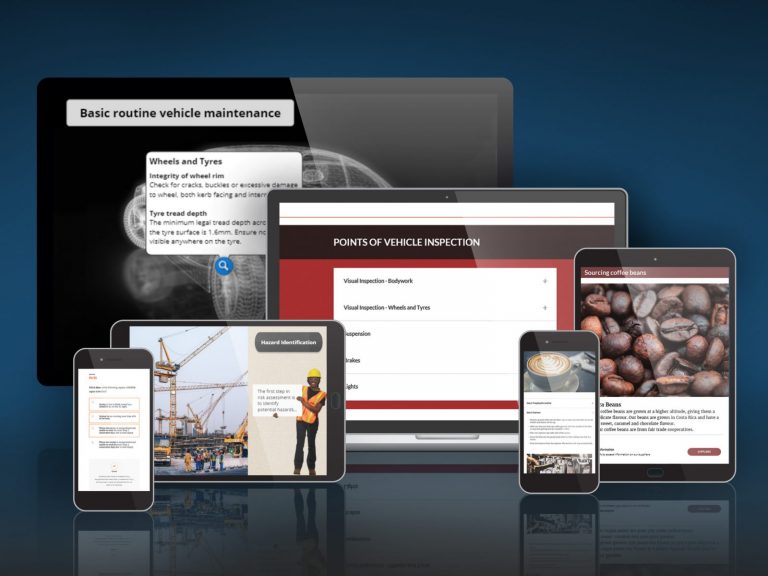At the start of 2021, we had the pleasure of delivering some online training to a client of ours in the software industry. I have delivered plenty of training previously, and so I was no stranger to this. I have fond memories (for the most part) of delivering training to a whole host of learners, ranging from college students through to senior managers, and one thing that unites my experience with all these individuals is that, as a trainer, you reap the benefits of engaging them in training as soon as you possible can – getting them active and engaging with each other at the start of a training day.
With covid restrictions still very much a part of everyday life, we had to deliver this training to individuals across the UK and Europe via an online platform. Although there are real positives to this method of delivery, (not least when looking to deliver with international teams), one issue that is apparent is how to energise learners at the start of an online training session. How are you supposed to engage your learners in intensive – sometimes challenging – training content when they are joining you from the comfort of their own homes – an environment that by design is meant for comfort and separation from the outside world?
Here are some options you can use to help ensure early engagement of individuals to online training.
Allow time for chit-chat
This may sound counter-intuitive, but allowing learners the opportunity for some informal chit-chat before training begins is actually a vey good way of promoting engagement in the training itself. It eases them into the session and, depending on who is attending, is often a cultural norm when it comes to anything involving a team or meeting. Allowing for informal discussions before training begins will also strengthen the bonds between individuals on the course, which will support better interaction later when you place them in breakout rooms or team exercises. You can utilise platforms like Microsoft Teams to provide group Wiki’s to support this chat, giving you a separate ‘environment’ for pre-training engagement.
Deliver an ice-breaker
A quick google search will throw up many ideas for icebreakers to use at the start of training. Icebreakers have long been used when delivering face-to-face training, and are a great way of getting delegates engaged in the training session. The good news is that – if chosen correctly – they can be fantastic at engaging remote learners. Although you may not be able to get individuals moving around the training room posting sticky notes on the walls, you can encourage movement remotely (where applicable and safe to do so, of course!), but mostly I would suggest using an icebreaker to engage their learning brains and promote relationships with other delegates. Where icebreakers work best is where they seem separate or different from the content of the training, but that do link to the core messages of the day – for example, watching a tongue in cheek ‘Who dunnit’ video when delivering a session on reading body language. This type of icebreaker can be fun, create intrigue, and encourage group interaction, all through a remote learning session.
Brain games
The jury is out on whether brain training games are an effective tool in improving brain function, however studies have suggested that they are effective in engaging both sides of the brain, setting an individual up to engage with training. These may work particularly well where the training content requires logical engagement, or where problem solving may be required. Remote delivery offers opportunities to deliver these in some interesting ways, that can be worked to align to the days learning objectives (such as splitting the delegates into teams to work on a problem to promote group working, for example), and often in a way that works better than if you were delivering the exercise in person.
Know your delivery platform
This one is not so much an option as a necessity. If you thought that IT could present challenges when delivering in-person training, it can be far worse when delivering the training fully online – and there is nothing that disengages an individual more from the days training than being presented with IT issues (or poor use of IT) early on in a training session. As a trainer, make sure that you know your platform and its features, as well as how you are going to use these to encourage engagement in the session. It is always good practice to have a dry run through online delivery to make sure you are confident in delivering on your chosen platform, and to seek feedback from the learners in the aspects that are working well, and those that are not. If you are able to begin your training with confident and correct use of your chosen delivery platform, it will help engage the individuals, and ensure the IT usage is not distracting them from the training itself.
We all welcome the ‘return to normal’ from covid-19, and we have yet to understand what the ongoing impact will be on workplace training. My feeling is that the use of online learning is going to be one that remains with us as part of a blended approach to training delivery, and so it is important to understand how to engage your learners with it. The best training I have experienced is where you have a knowledgeable trainer that has the ability to fully engage you in the learning – this is a skill that needs to be replicated online so that we can continue to deliver high quality training to our employees.

Is online training the way to go?
Download the L&D development activities chart to compare different methods that you can use to help your employees to develop their skills and knowledge.
View comparison chart

